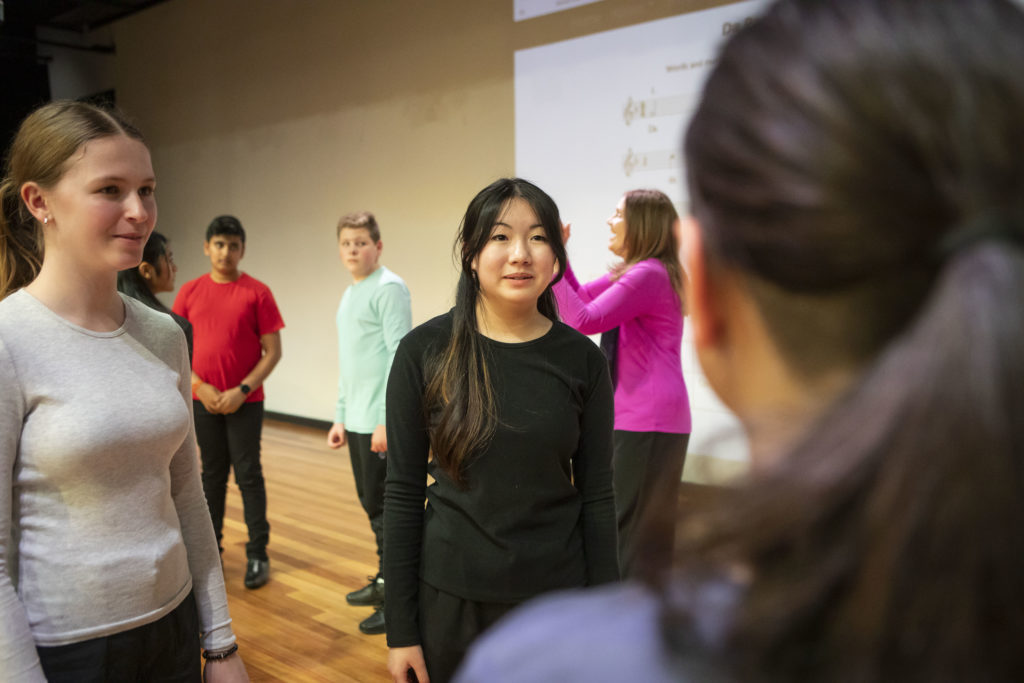3 First Nations activities for your music classroom
Comments Off on 3 First Nations activities for your music classroomRead on for ideas for how to use First Nations songs along with links to some great activities, available via the Music Teachers’ Digital Library (note, some are free, but others are only accessible with a subscription).
Wirrumu (The Moon), is an Indigenous lullaby sung in Yolngu Matha languages (from northeast Arnhem Land) & English, written, produced and recorded by Manuel Dhurrkay & Caiti Baker.
Their stunningly beautiful recording of this was published in “The Moon, The Mouse & The Frog: Lullabies from Northern Australia” by the Australian Broadcasting Corporation in 2021.
Inanayis an Indigenous Australian song or lullaby, thought to be in Yorta Yorta, the language of one of the Aboriginal tribes of Victoria. It has also been collected from Thursday Island and the Torres Strait Islands. A direct translation is unavailable; however, it is thought to be a song about a goanna (gupuana) with the ‘choo’ being the shooing away of the goanna.
As well as being a beautiful song to sing, it is also great for unconsciously highlighting 2 metre, the do pentachord and the anacrusis, discussing asymmetrical phrasing and introducing I IV V harmony.
This First Nations song Mumma Warrunno (Maranoa Lullaby),is from Southwest Queensland. It was collected and translated by H.O. Lethbridge and an arrangement, by Arthur S Loam, for voice and piano was published by Allan & Co in 1937 in a collection of three songs called “Australian Aboriginal Songs”.
Sung through twice – the first time through with lyrics in Gungarri, from South West Queensland, and the second time in English – this simple song is perfect for sequentially preparing / presenting / practicing la, unconsciously practicing 3 metre and teaching question & answer form.
Recorded Fun
Students compose new versions of a recorded song by writing a new melody for the given rhythm using only known notes.
- On the board is written the stick notation of the first sixteen beats (the first four bars are repeated three times to equal twelve bars) of Wirrumu (The Moon).
- Students sightread the rhythm on the board whilst conducting, then sing in solfa with handsigns several times.
- Students to listen to the first 33 seconds of Wirrumu (The Moon).
- Students discuss what they hear.
- Students create their own melody using the same rhythm, only do re mi so and la and the same question (repeated three times) and answer form.
Clickhereto access the activity: la – Late Practice: Creative & Written
Circle Song Notes
Groups of students sing allocated notes of a known song with movement.
- The teacher sings Mumma Warrunno while keeping a steady beat, on a neutral syllable e.g. “doo”.
- The class identifies the name of the song and sings the song with the words, showing the melodic contour in the air.
- The teacher sings the first phrase with the words and the class sing back in solfa with handsigns. Repeat for each phrase.
- The class sing the whole song in solfa with handsigns.
- Divide the class into four groups and allocate each group a note: do re mi or so. All groups are allocated la as well.
The four groups form circles in each corner of the room.
- Facing clockwise around their circles, students sing the song in solfa with handsigns slowly – as a lullaby – taking a small step forward every time they sing their allocated notes.
- Repeat f. showing the handsigns for all notes but only singing their allocated notes (either do re mi or so and la) out loud.
Clickhereto access the activity: la – Early Practice: Aural

Ostinato & Body Percussion
Once the song Inanay has been learned, the ostinato pattern can be added, performed first by the teacher as the whole class sing the song, then by half the class while the other half sing.

Once students can simultaneously clap the ostinato while singing the song, they can begin adding in the following body percussion actions.

Clickhereto access the song: Inanay
Happy exploring, everyone! – Deb


Comments are closed